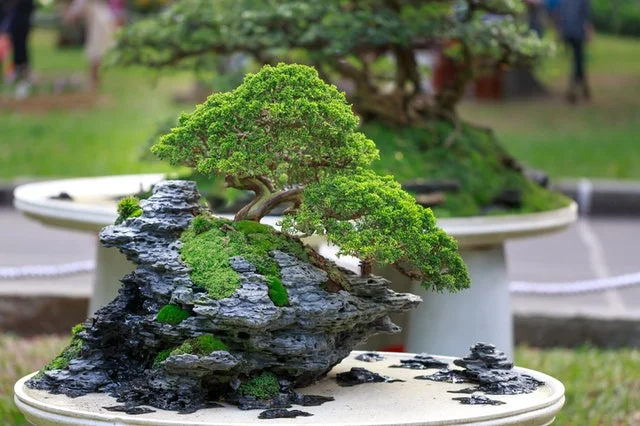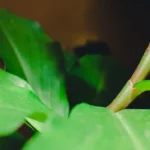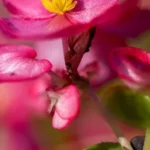The jade bonsai tree is a small tree with a thick trunk and dark green oval-shaped fleshy leaves. During the autumn, white flowers bloom if there have been dry times during the season.
Although the tree bark is green when it is young, it turns reddish-brown as it matures.
Table of Contents
How To Care For A Jade Bonsai Tree
This particular type of plant is considered an indoor tree in temperate zones. It can be grown outside if temperatures do not drop below 4 degrees Celsius (40 degrees Fahrenheit).
In either location, the tree requires specific care to survive and thrive.
What does your jade bonsai tree require?
The following details are what the plant needs to be healthy. Most of the requirements pertain to indoor care.
- Light Requirements: The jade bonsai tree develops better in full sunlight. When kept indoors, it should be placed near a window that gets ample sunlight. When this plant obtains the light it needs, the tips or edges of the leaves turn red.
- Temperature Requirements: These plants prefer warmer temperatures of between 21-24 degrees Celsius (70-75 degrees Fahrenheit) during the day and 10-13 degrees Celsius (50-55 degrees Fahrenheit) during the night. It can tolerate cooler air, as low as 4 degrees Celsius (40 degrees Fahrenheit) when outdoors, but it should not be exposed to these temperatures for extended periods.
- Humidity Requirements: The best humidity levels for this tree ranges between 30-50%.
- Water Requirements: These trees only need small amounts of water because they retain a lot of fluid in their leaves. In colder months, they need even less. Water can be added at any time when the soil is dry. This particular species is more tolerant of overwatering than other types of plants. However, repotted plants must not be watered for a week after the process, as this could cause root rot to develop.
- Soil Requirements: A well-draining, coarse, sandy soil mixture is recommended. All-purpose potting mix with perlite or that made for succulent plants works well too.
- Fertilizer Requirements: The jade needs fertilizer once a month during spring, summer, and autumn. These three seasons are growth seasons. Plant food is not necessary during the winter when the plant is dormant. Any kind of standard fertilizer usually works well.
Extra Tips For A Jade Bonsai Tree
This species of bonsai is low maintenance. With the right level of care, these trees typically remain healthy for a long time.
Of course, it is always recommended to have other details on the care of these plants in the rare event that issues do arise or the caregiver would like to prune or propagate their jade.
Pests and Diseases
Insects and illnesses are rare for a healthy jade bonsai when it receives enough sunlight. That being said, here are some of the most common issues that may occur.
- Soft Scale Insects: These insects are small but visible, typically found on the underside of the leaves. They cause the appearance of sooty mold. These insects are eliminated by using special horticultural sprays, but the remedies must be designed and suitable for these trees.
- Spider Mites: Infestations of these pests can cause speckling on the leaves. Aside from seeing the actual spiders of red, white, or black, another sign of their presence is the wispy webs that cover the leaves. Certain insecticides or insecticidal soaps may be used, but they must be suitable for this species of tree. Warm water with dish soap can be sprayed as a fine mist over the leaves to prevent future infestations.
- Root Rot: This appears as brown or black discoloration on the trunk close to the soil. As the problem worsens, it spreads up the trunk and possibly to the branches. Leaves may start to yellow or turn brown. In these situations, the tree needs repotting into fresh soil and a new pot. It is crucial not to water the plant for the first week after it is repotted. Fungicides may be required also.
Only insecticides and fungicides designed for use on succulents or these particular kinds of trees should be used. Some types of horticultural soaps are not recommended for jade bonsai trees as they could cause additional damage.
Pruning
The jade bonsai tree does very well with pruning because the leaves are often so heavy with water.
The additional foliage at the top of the branches may make them bend. Pruning can prevent this bending and take the weight off the top of the tree.
This process also helps train the tree to grow branches on the bottom half of the tree, making the weight easier to handle.
Any cutting must be done with sterilized sharp pruning shears or scissors.
Propagation
Propagation can be done during the summer using cuttings. The first step is to obtain the cutting from a healthy plant – one that is free from any illness.
The three or four-inch (7.5-10cm) cutting can be taken from a branch using a sterilized sharp pair of pruning shears or scissors.
The cutting needs to dry before going any further. A wet cutting could promote the growth of fungus or bacteria-causing disease.
The remaining plant must be placed in a warm, dry area to prevent the wound from developing an illness.
The bottom of the cutting needs to be dipped in rooting hormone designed with anti-fungal ingredients.
When the cutting has dried, it can be placed into a container with a moist potting mix consisting of perlite or vermiculite and soil. The soil must only remain damp through the process until roots have formed. At this time, regular care can start.
If the tree does not have a branch long enough, it is possible to propagate from a leaf. The leaf can be snipped from the tree, but it must be a strong, healthy one. The leaf is to lay in the same type of soil mixture, watering only sparsely until it forms roots.
When roots form, the leaf will sprout tiny plants from its edges near the soil. This process could take up to two months.
Toxicity
These plants are mildly toxic to humans. Gloves should be work while working with this species. They are also poisonous to horses, cats, and dogs.
Photo by Quang Nguyen Vinh from Pexels



